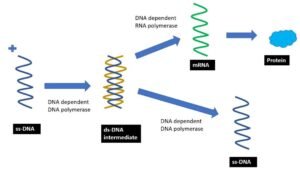Lassa fever
What is Lassa fever?
Lassa fever is a zoonosis, an acute viral illness transmitted to humans from rats (multimammate rat – Mastomys natalensis).
Lassa fever was first discovered in 1969 from a case in Lassa, Nigeria.
It is endemic in West African countries like- Benin, Ghana, Guinea, Liberia, Mali, Sierra Leone, Togo, Nigeria. However, it probably exists in other West African countries as well.
It has been estimated that about 100,000 to 300,000 infections of Lassa fever occur annually. This number could be an underestimate as many cases may not get reported.

https://www.ncbi.nlm.nih.gov/pmc/articles/PMC3562201/
How severe is Lassa fever?
Over 80% of people infected with Lassa fever never develop symptoms and recover spontaneously. Lassa fever accounts for 10%-16% of hospitalisation in endemic countries. Although the overall case fatality rate is low (1%), it could be 15% in severe hospitalised cases.
In perspective, the case fatality rate for COVID-19 was usually around two, but at the peak of the epidemic, it went up to 14-16% in some countries. You can get an idea here – https://ourworldindata.org/grapher/deaths-covid-19-vs-case-fatality-rate?time=2022-02-10

What is the Lassa virus?
Lassa virus or Lassa mammarenavirus (LMV) belongs to the arenavirus family. It is an enveloped, single-stranded, bi-segmented RNA virus.
Unlike other enveloped viruses, LMV uses a clathrin-independent endocytosis process to enter the cell. The receptor for these viruses is alpha-dystroglycan (alpha-DG). The virus replication and transcription occur in the cytoplasm. The newly formed virus exits the infected cells by budding.
This virus has a high degree of genetic variability, and seven clades of this virus are circulating in West Africa.


How is Lassa fever transmitted?
The main reservoir of LMV is the rat. Once infected, the rat excretes the virus for a prolonged period, often lifelong.
These rats live in the close vicinity of humans. Humans may get infected by eating food/water contaminated with rat excretion, inhaling the dust particles from soil contaminated with rat excretion and occasionally by direct contact with the rat, e.g., handling or eating a rat.
Person-to-person infections and laboratory transmission can also occur. It is usually after exposure to the virus in the blood, tissue, secretions, or excretions of a Lassa virus-infected individual. This is more common in healthcare when appropriate personal protective equipment is not used.
Casual exposure, like shaking hands or exposure without exchanging body fluids, does not transmit Lassa fever.
What are the symptoms of Lassa fever?
The incubation period takes about 1 – 3 weeks after exposure to develop the infection. 80% of the individuals either develop mild or no symptoms.
Patients usually present with fever and malaise (disproportionate to fever). After a few days, headache, body ache, arthralgia, sore throat, cough, nausea, vomiting and diarrhoea could be seen.
1 in 5 cases may develop severe symptoms, which are
- Facial swelling
- Bleeding from multiples sites (conjunctiva, mouth, nose, GI tract, or vagina)
- petechiae/ bruising, DIC
- respiratory distress, hepatitis and renal failure
- fits, loss of consciousness, tremor, and gait disturbance.
- Fetal loss, maternal death in pregnancy (especially late pregnancy)
- Death (may occur within 2 weeks).
1 in 4 patients who recovers develops deafness (sensorineural), half of which regain hearing after 1-3 months.
Test for Lassa fever
- If Lassa fever is suspected, local infection specialists (microbiologists/infectious disease consultants) must be notified as early as possible.
- Notification should also be sent to infection control, local laboratory and public health.
- The virus could be found in blood, urine, pleural fluid, semen, cerebrospinal fluid, throat swabs, and sputum.
- The test for Lassa fever can be done in the Rare and imported pathogens Laboratory (RIPL), Porton Down. The case should be discussed with RIPL. Microbiologist/ID should contact the imported fever service, RIPL, for VHF PCR.
- There are other tests available for Lassa fever in different healthcare setups – cell culture, immunofluorescence assay, complement fixation tests, ELISA for Lassavirus antigens and IgM antibodies, and a few other tests on development, e.g. rapid immunoassay or CRISPR-based assay.
Infection control
- Lassa fever is an ACDP hazard group 4 organism.
- Microbiologists, infection control teams, OSM, laboratory and public health must be notified at the earliest opportunity.
- Appropriate local or national infection control policy must be followed.
What are the treatments for Lassa fever?
- Supportive treatment is the most important treatment- fluid, renal support, ventilatory support etc.
- Antiviral – Ribavirin can improve outcome if given early in the disease process.
- Newer therapies with limited evidence – Favipiravir, monoclonal antibodies.

